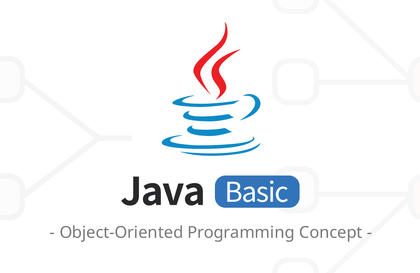
Kim Young-han's Practical Java - Fundamentals
yh
$34.10
Basic / Java, oop
5.0
(1,393)
Easily learn the core concepts of Java object-oriented programming needed in practice through example code.
Basic
Java, oop
You can utilize and complete the DB data access technology required for backend development. You can understand the principles and structure of Spring DB access technology and grow into a more in-depth backend developer.
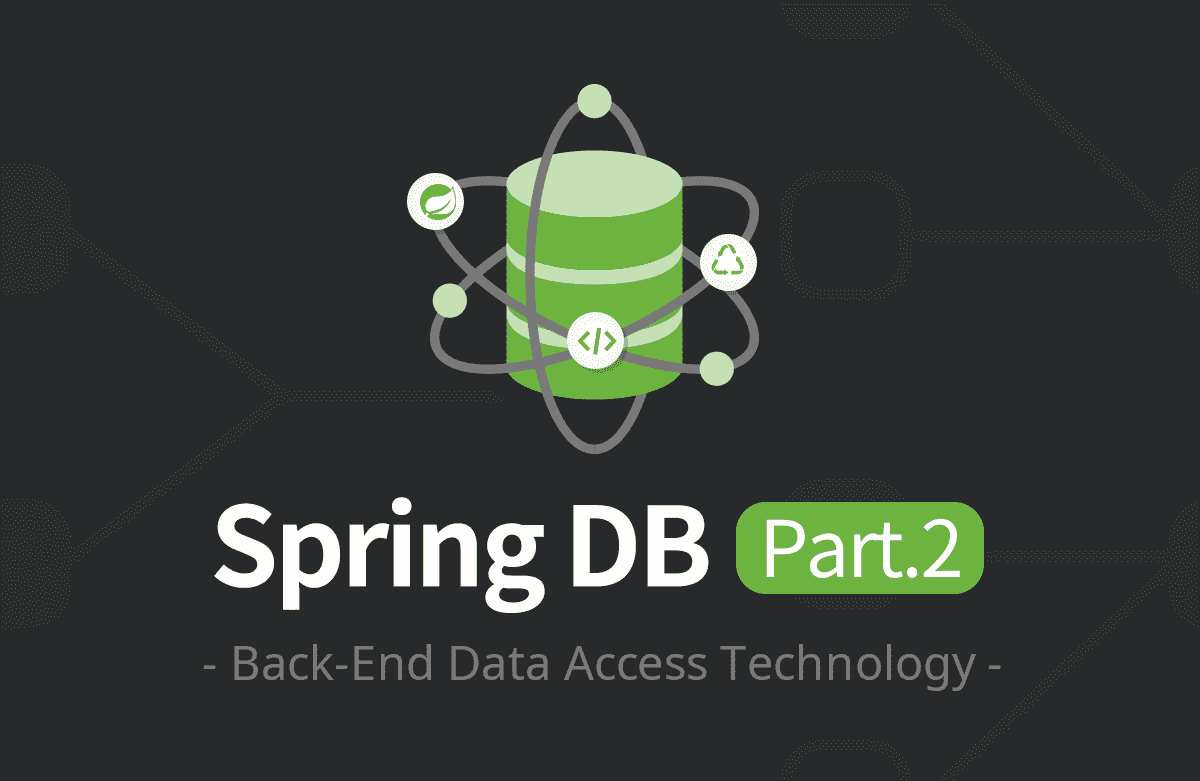
Internal principles of using DB through Spring
Various ways to use DB through Spring
Spring DB Access Technology
Must-know for backend developers
Spring Data Access Technology Part.2
📣 Please check!
This lecture is the 7th lecture in the Java Spring Complete Conquest series . Please check the Spring Complete Conquest roadmap by Younghan Kim, the youngest technical director of Woowa Brothers, first.
• Roadmap link: https://www.inflearn.com/roadmaps/373 (click to go there)
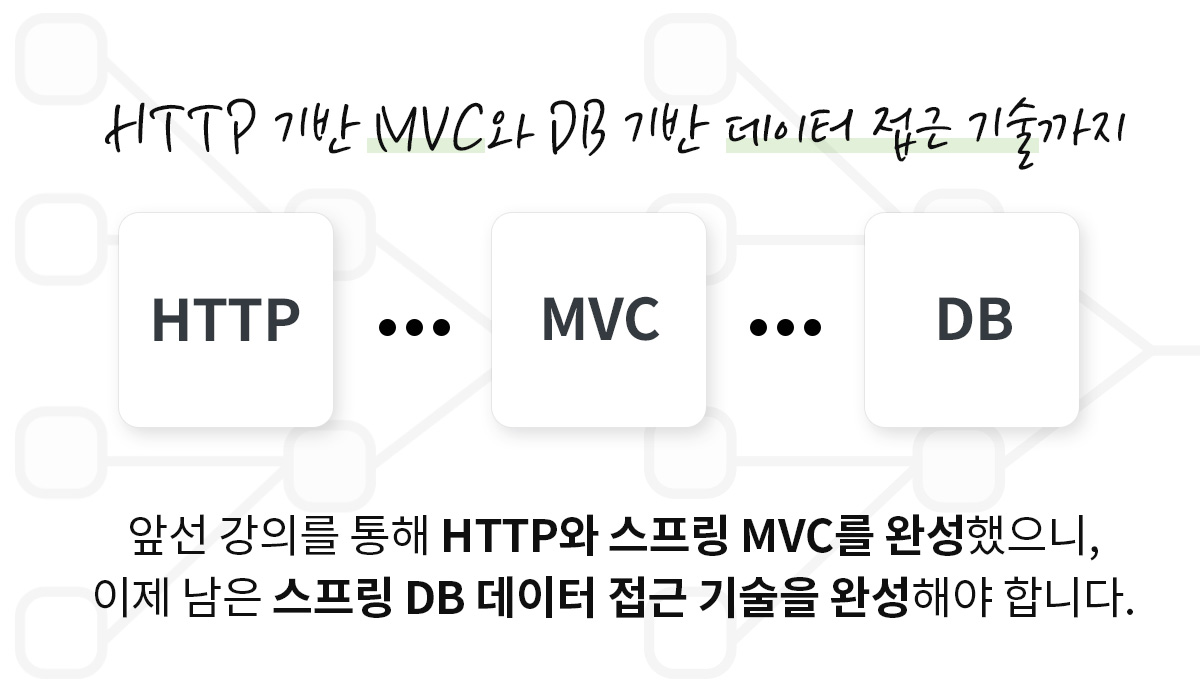
To properly develop a backend web application, you need to complete two major axes: MVC based on HTTP and data access technology based on DB. We completed HTTP and Spring MVC in the previous lecture, so now we need to complete the remaining axis, Spring DB data access technology.
Please check whether you understood the principles and structure of Spring DB through the previous lecture, <Spring DB Part 1> .
1. Understand the basic principles of Spring data access technology
2. Develop directly with code used in practice
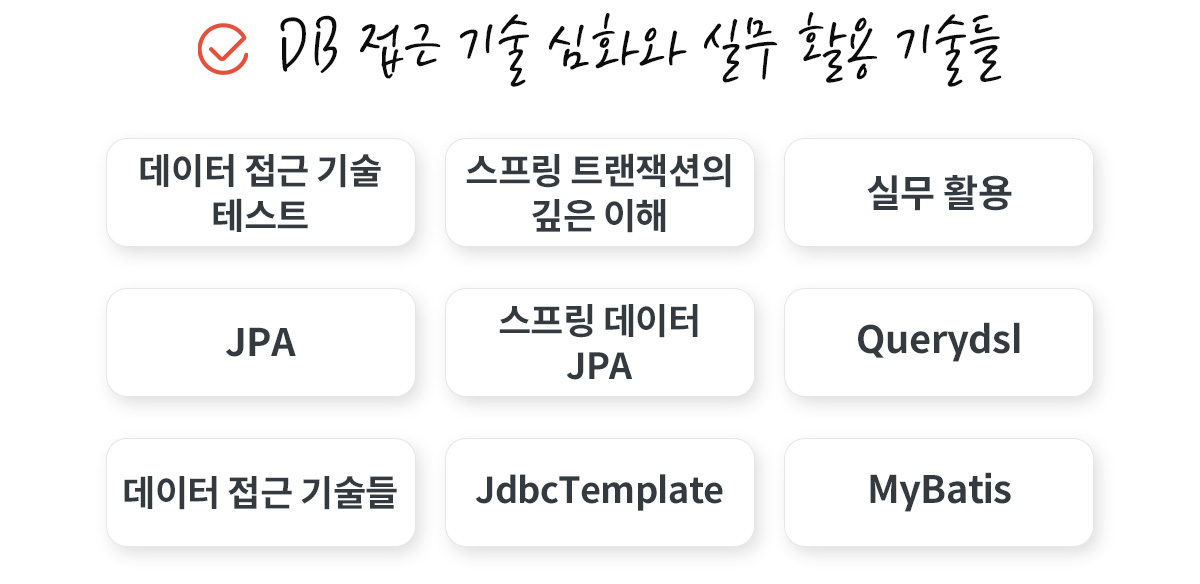
Through the Spring DB Part 1 lecture, we have understood the core principles and structure of DB access technology. In this Spring DB Part 2, we will learn various practical utilization technologies based on Part 1. Part 2 is largely divided into three parts.
You will learn about various data access technologies that are mainly used in practice, such as JdbcTemplate, MyBatis, JPA, Spring Data JPA, and Querydsl, by gradually developing them through practical examples. Through this process, you will naturally understand why each technology is necessary and the pros and cons of each technology while developing code.
Data access technology is ultimately used for the purpose of managing data in a database. Therefore, it is necessary to check whether the data access technology can properly store and retrieve data in an actual database. In this lecture, we will explain step-by-step how to conduct tests in a situation where a database is linked.
In Spring DB Part 1, we learned why the transaction function provided by Spring is necessary and how it works, as well as the internal principles. In this lesson, we will learn about Spring transactions in great depth and learn how to use them in practice.
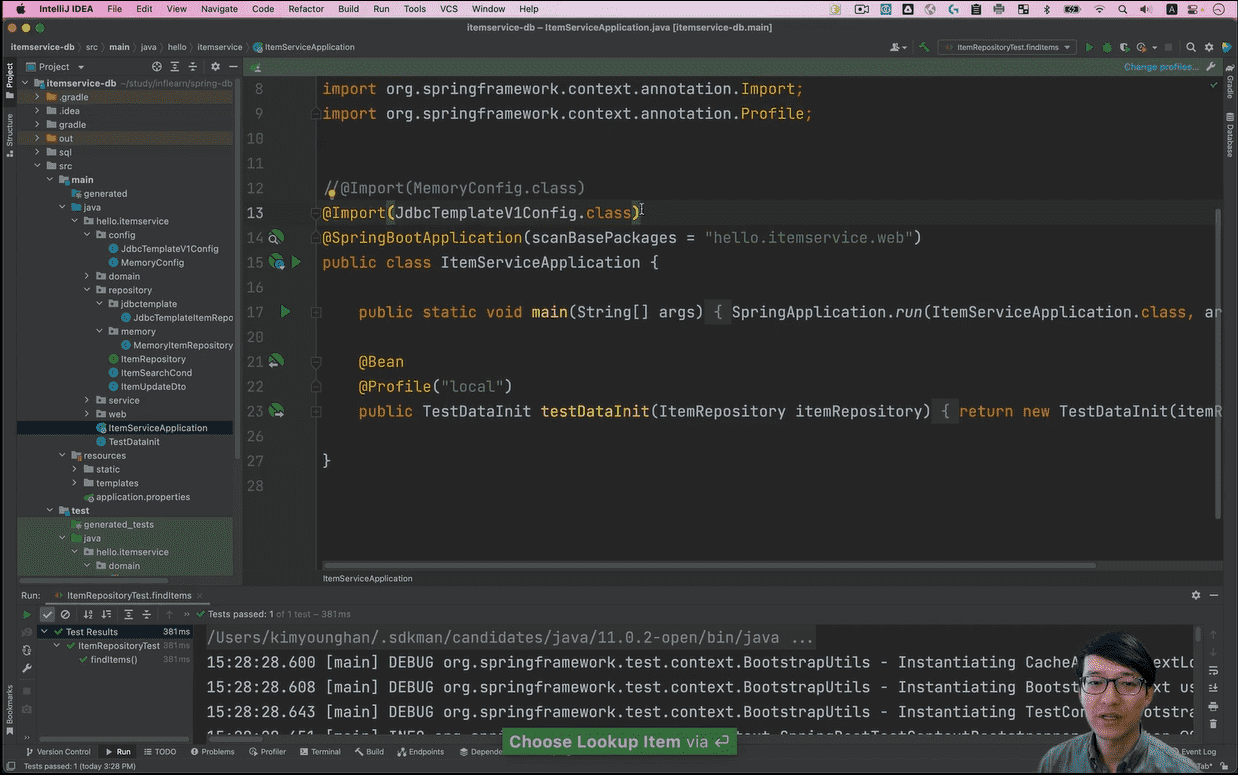
When using SQL directly, the JdbcTemplate provided by Spring is a good choice. This technology makes using JDBC very convenient. And it handles most of the repetitive tasks that occur when using JDBC directly.
* Developers only need to write SQL, define parameters to pass, and map response values.
* Understand the pros and cons of JdbcTemplate by applying it to a real-world web application.
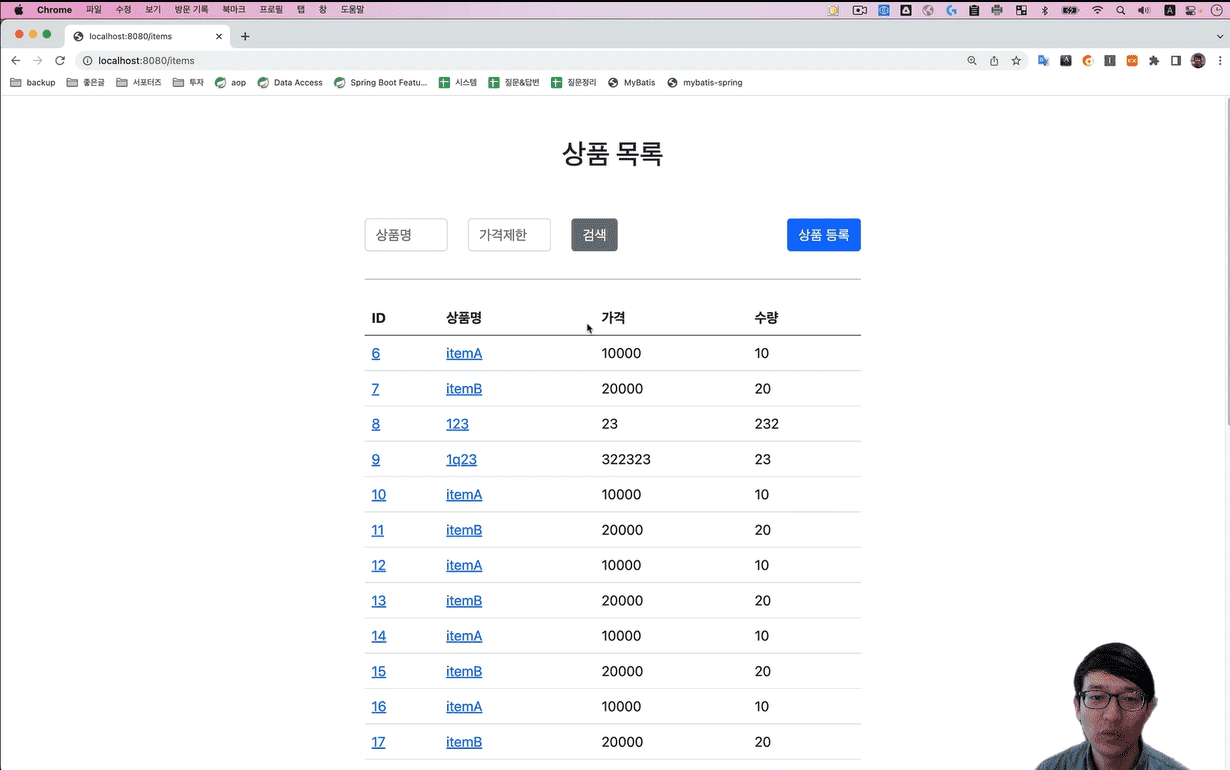
MyBatis offers more features than the JdbcTemplate described above. The most attractive point of MyBatis compared to JdbcTemplate is that it allows you to conveniently write SQL in XML and also allows you to conveniently write dynamic queries. In this lecture, you will understand the advantages and disadvantages of the technology by directly applying MyBatis to a real-life web application.
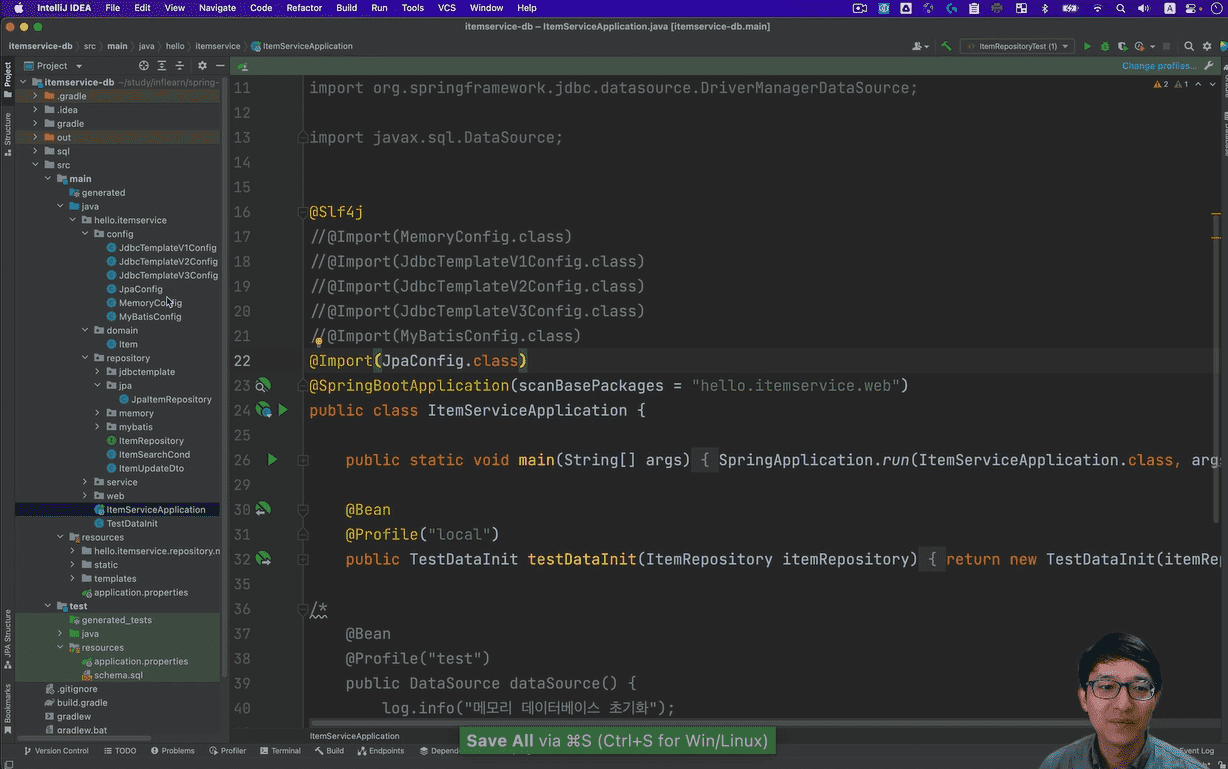
Spring and JPA are the main technologies in the Java enterprise market. While Spring provides various functions for the entire application, including the DI container, JPA provides ORM data access technology. JPA is as vast as Spring and has a lot to learn, but once you learn it, you can greatly improve your productivity in data access technology. Here, we will look at the basic functions of these technologies, the pros and cons of each technology, and the overall big picture of why you should use them.
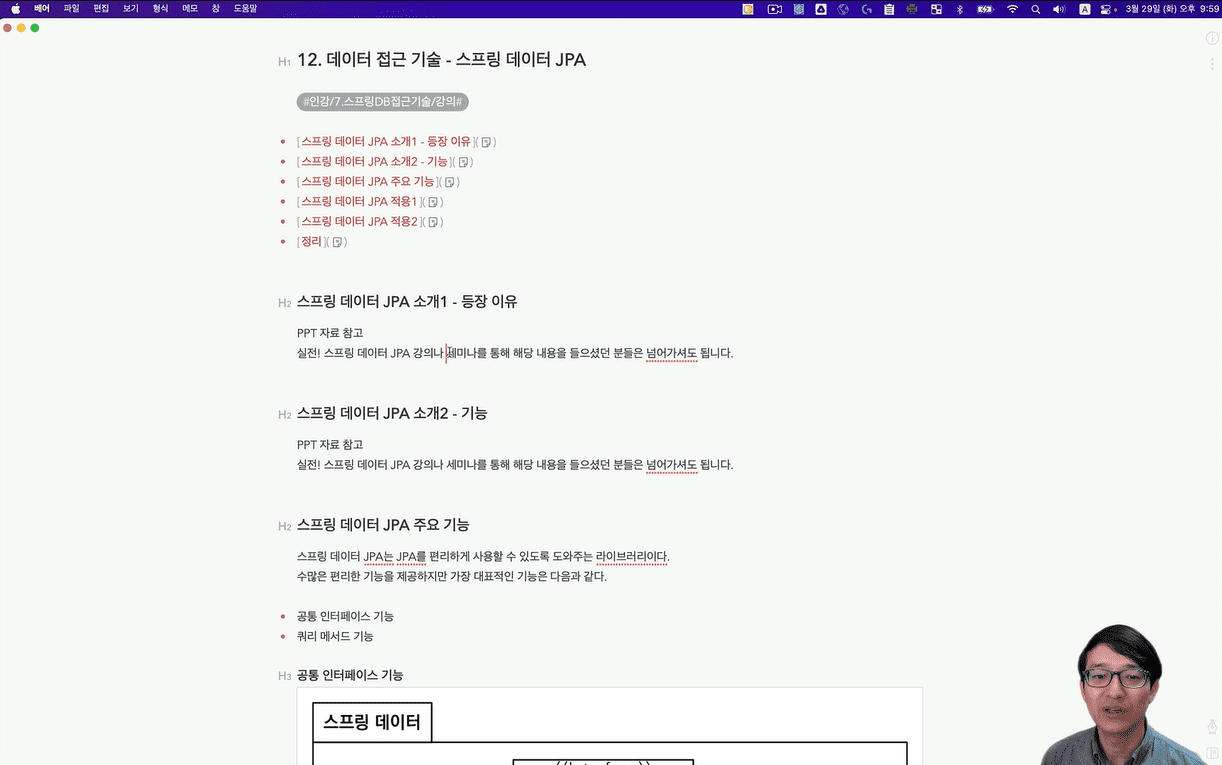
Spring Data JPA is a technology that helps you use JPA more conveniently. Simply put, it provides all the basic CRUD functions, so it can dramatically reduce the amount of development code that developers have to write. In this lecture, you can understand the advantages and disadvantages of the technology by directly applying Spring Data JPA to an actual web application.
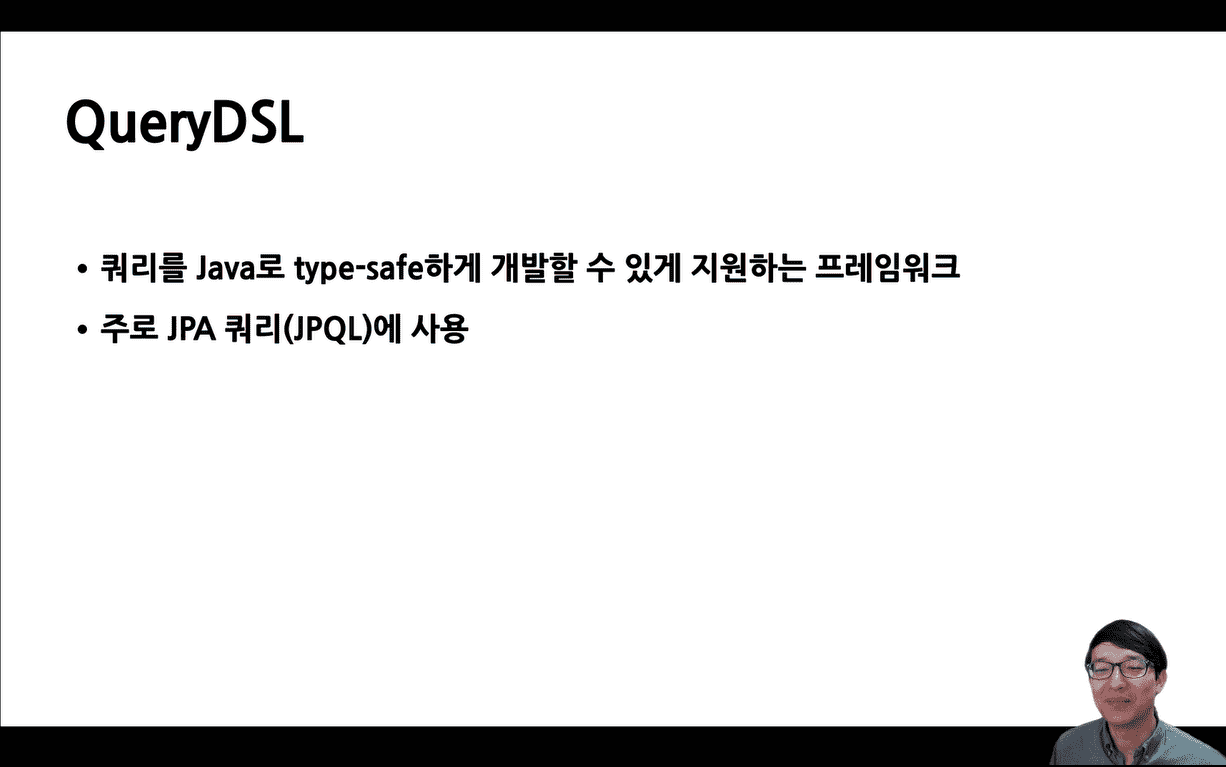
JPA has difficulty handling complex or dynamic queries. Querydsl can solve these problems very conveniently. If you use JPA in practice, this is a recommended technology that you must use. In the lecture, you can understand the advantages and disadvantages of the technology by directly applying Querydsl to actual web applications.
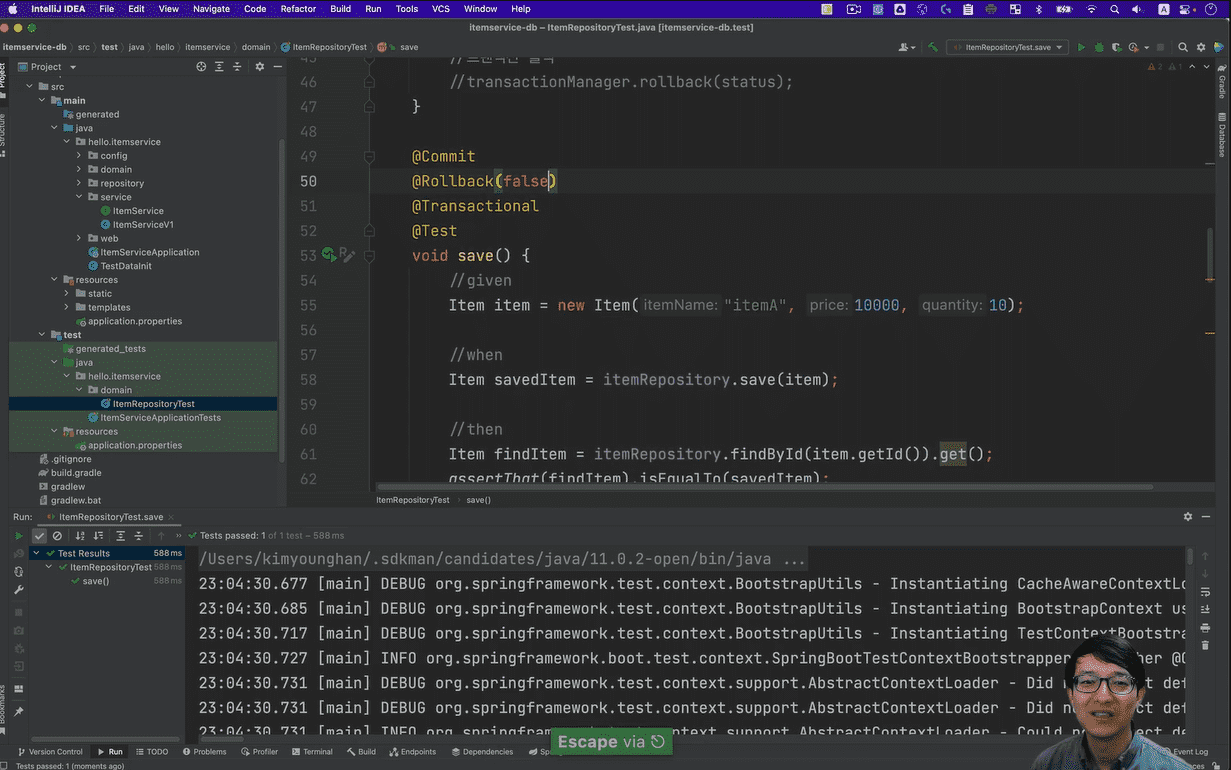
Data access technology is ultimately used for the purpose of managing data in a database. Therefore, it is necessary to check whether the data access technology can properly store and retrieve data in an actual database. In this lecture, we will explain step by step how to test in a situation where a database is connected. For example, we will explain how to configure a test that connects to a database, and learn how @Transactional and embedded mode DB work through code.
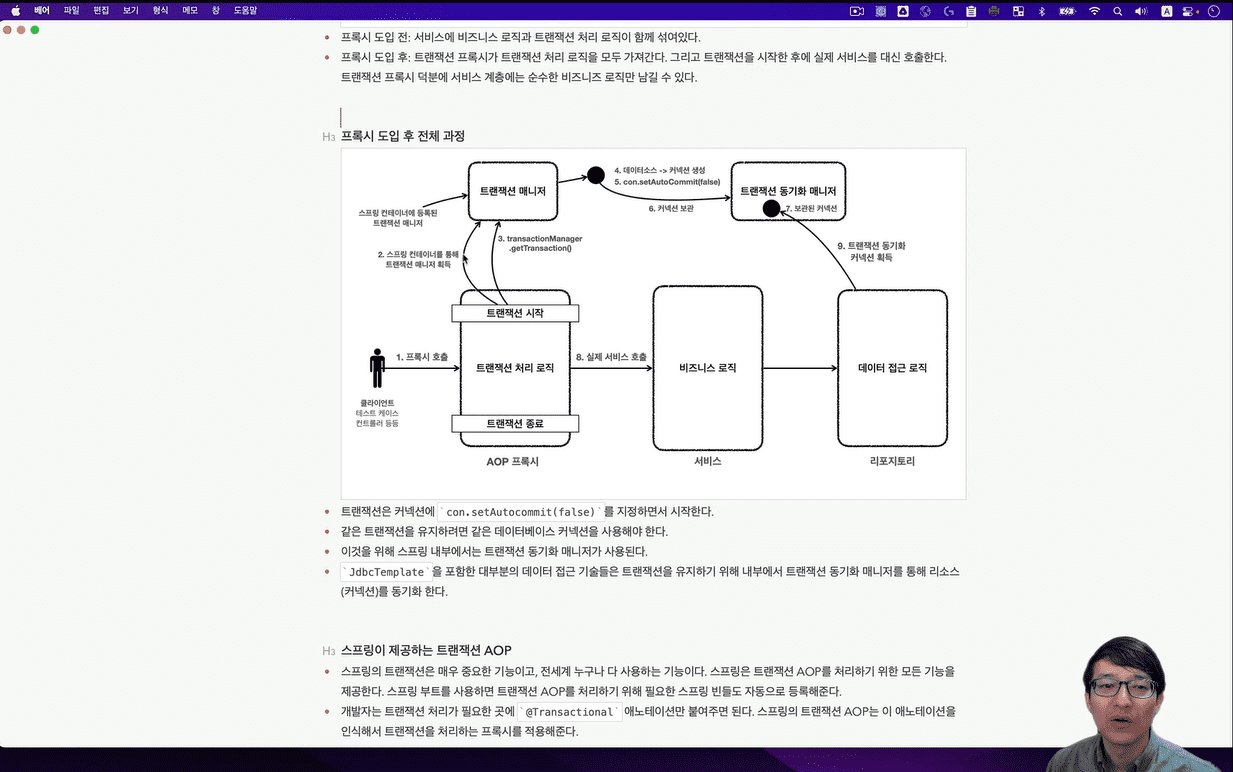
In DB Part 1, we looked at the internal principles of why the transaction function provided by Spring is necessary and how it works. In this lesson, we will look deeply into the various functions provided by Spring Transaction, such as practical precautions when using Spring Transaction AOP, various options for Spring Transaction, and the internal principles of how Spring Transaction is committed and rolled back when an exception occurs.
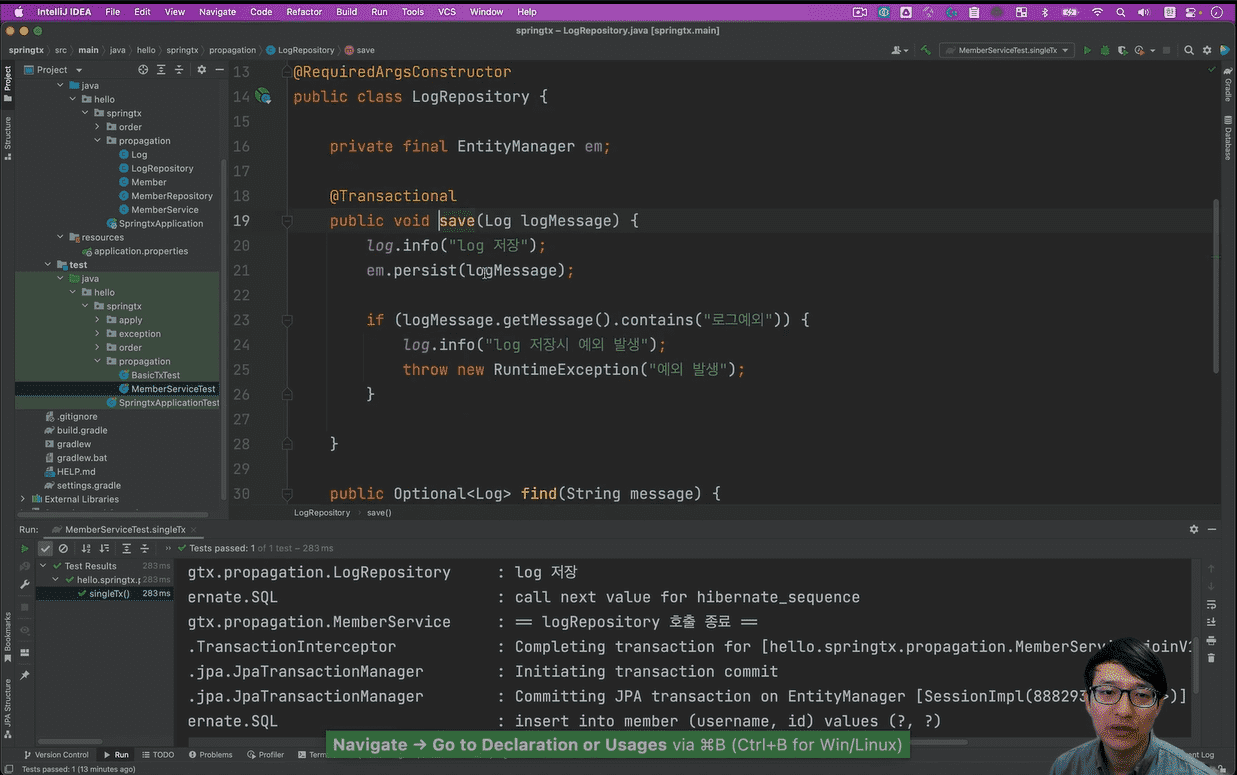
We cover Spring's transaction propagation in great depth. We understand why transaction propagation is necessary, cover various transaction propagation options, exception handling according to propagation options, and cautions when using transaction propagation options in practice.
![]()
Who is this course right for?
Developers who want to access DB and manage data through Spring
Developer job seeker
Working developers who want to deeply understand Spring DB access technology
Developers who want to create web applications with Spring
Need to know before starting?
Java language
Spring Basics
DB Basic Knowledge
502,153
Students
31,385
Reviews
8,780
Answers
5.0
Rating
22
Courses
교육자
전: 우아한형제들 기술이사, 카카오, SK플래닛
진짜 실무에 필요한 제대로 된 개발자가 될 수 있도록, 교육하는 것이 저의 목표입니다.
EO 인터뷰 영상
개발바닥 - 시골 청년 개발왕 되다
All
88 lectures ∙ (13hr 59min)
Course Materials:
All
499 reviews
5.0
499 reviews
∙
Reviews 11
∙
Average Rating 5.0
5
I'm learning a lot. Thank you always.
Mr. Choi Jun-young, thank you for listening so diligently. I also feel rewarded. Thank you.
∙
Reviews 10
∙
Average Rating 5.0
5
Honestly, those who don't know the contents of Spring DB 1 and 2 are building a tower on top of their thoughts. If you don't know even one thing about the table of contents, definitely listen to it! Listen twice
Thank you so much for listening so diligently, Mr. Uzza!!
∙
Reviews 2
∙
Average Rating 5.0
5
Hello, Younghan! I started studying in July of last year, and after 1 year and 4 months, I finally listened to all of Younghan's lectures (except for the boot lecture). While listening to each lecture, I decided to listen to DB Part 2 and write a proper course review, and I'm finally able to write one. When I was feeling lost studying development as a non-major, I think I was able to grow by listening to Younghan's lectures. I worked on several projects through the lectures, and studied the CS I lacked through study. I will tell you about the characteristics of Younghan's lectures, who listened to all of Spring and Jpa's lectures. Let me tell you about the characteristics of Younghan's lectures. In order to learn the 5 steps, he teaches you step by step from step 1. If you know step 5 without knowing steps 1-3, if you learn steps 1-3 through the lectures, you will know why step 5 came out like this. I always listened to it without knowing, so I was always amazed when I saw the code evolving, thinking, "Technology has developed this much." (The reason there can be new technologies is because there are technologies from the past.) And I think that it is more effective to watch Younghan's lectures multiple times. For example, if you listen to the Spring Basics lecture, then the Spring MVC lecture, and then listen to the Spring Basics lecture again, your perspective will be broader than when you first listened to it. That's why I think I listened to JPA Basics 2-3 times (because it's difficult). For those of you who are considering Younghan's lectures, I hope you read this article and think about it. Oh, and lastly, thank you so much for the supporters' QnA answers! Whenever I didn't know something, I always solved it by Googling or QnA. Good luck to you all. Thank you for reading the long article.
gusdn85554, you understand it step by step very well. And as you said, reviewing is also very important. I'm rooting for you!
∙
Reviews 17
∙
Average Rating 5.0
5
It's awesome :) It's the best lecture. I learned a lot while listening to the lecture and I'm using it well in my work. I'm planning to listen to the practical lecture as well, and I'm looking forward to the Spring Boot lecture.
Thank you, Hoon, for listening so intently. Fighting until the end.
∙
Reviews 13
∙
Average Rating 5.0
5
Hello, Professor. I finished this lecture as well. I followed the roadmap for about a year, listening to lectures after work and on weekends, but now only the last chapter of the grand finale is left. I am so grateful that you always explain the background of the technology and why it is used so that anyone can understand it, and try to convey at least one more thing. Sometimes I see the professor's computer time while watching the lecture. Sometimes it is a number, and sometimes it is a clock shape, so I thought that he was hiding it on purpose. Hahaha. Anyway, watching you film lectures at various times from early evening to dawn, I often reflected on myself, thinking, "The professor is filming such great lectures so diligently, but am I working that hard?" You provided such great lectures and gave me generous advice as a senior developer, so it was a year of time where I was able to gain motivation not only for technical learning but also for life. I think I will be able to maintain this system well and develop happily in the future. Thank you.
Dear Seonhanyeonggwangryeok Developer, thank you for always listening to me diligently and leaving frequent course reviews. Since you said you've been together for a year, I feel like I've done something together, so it's more rewarding. I've been spending more time lately, so I can focus more on the lectures, thanks to the students who sometimes talk to me^^
Check out other courses by the instructor!
Explore other courses in the same field!
$77.00